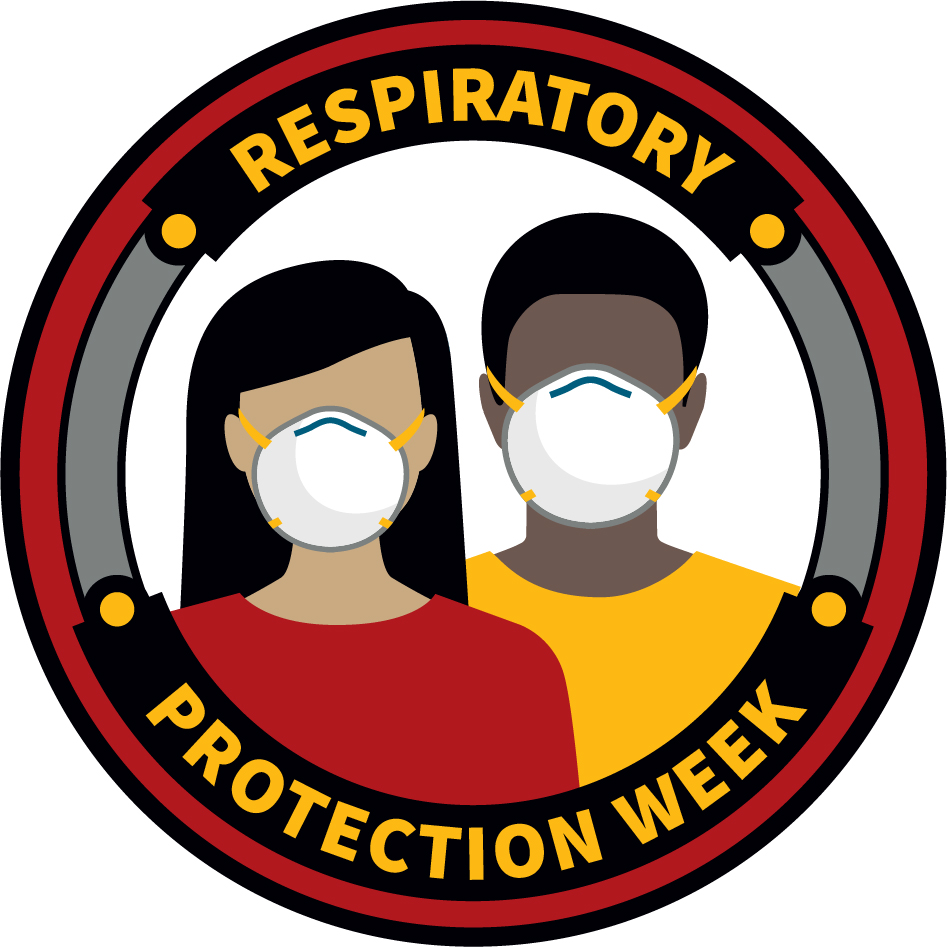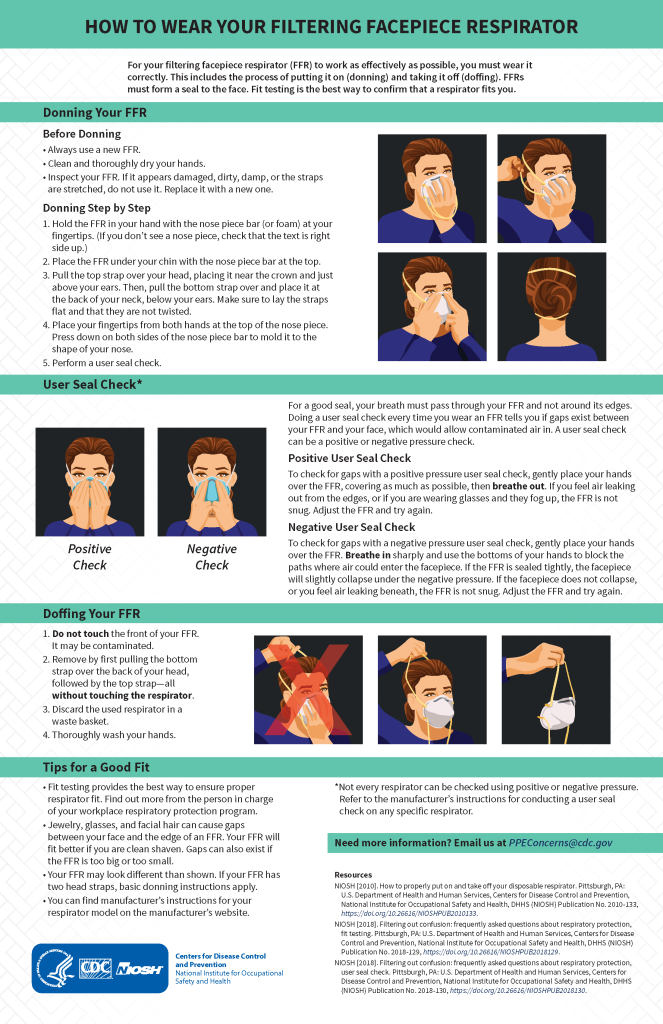Respiratory Protection Week 2022: Staying Committed to Proper Respiratory Protection Practices
Posted on by
Happy Respiratory Protection Week! Our commitment to respiratory protection runs deep for us here at NIOSH. In fact, we’ve been dedicating an entire day or week to promoting proper respiratory protection practices since 2012. Our goal since the beginning has always been to highlight the importance of respiratory protection in the workplace and provide resources that help you make educated decisions when selecting and wearing a respirator.
We know the last few years have been full of change, but through it all, the basics of respiratory protection have remained the same (did we just make that rhyme?). You’ve most likely heard this several times, but it’s worth repeating. Using a NIOSH Approved®[1] respirator, checking the fit, and donning (putting on) and doffing (taking off) your respirator properly are among some of the basic practices to make sure you stay protected on the job when exposed to harmful particulates.
When a need exists for respiratory protection in the workplace, the Occupational Safety and Health Administration (OSHA) requires the use of NIOSH Approved respirators. And that’s because NIOSH Approved respirators must meet our quality control, performance, and general construction and labeling requirements identified in the regulation, 42 Code of Federal Regulations Part 84. We carefully evaluate each respirator manufacturer for quality assurance before granting approval so workers can be confident that their respirators will consistently provide them the expected level of protection. This process entails more than just a one-time test of the respirator—manufacturers must submit a highly detailed application package for approval outlining their quality control plans, respirator samples, and more.
And our work doesn’t stop there. Once an applicant to NIOSH’s Respirator Approval Program becomes a NIOSH approval holder, we perform post-market evaluations, such as respirator product audits, which include testing commercially available NIOSH Approved respirators to ensure they achieve the expected level of performance. Further, we conduct routine site audits of the manufacturing facilities to make sure the quality of the manufacturing process remains the same as when we first granted approval. All of these approval requirements and quality checks provide workers confidence that their NIOSH Approved respirators will provide the expected level of protection. Find out more on our new post-market evaluations webpage.
Once you have a NIOSH Approved respirator, it’s time to get fit tested. Fit testing is a crucial part of making sure your respirator both fits you comfortably and provides the expected level of protection. OSHA requires a fit test before initial use, then annually after, and when any physical changes may affect the fit such as weight gain or loss. If at any time you need to wear a different make, model, style, or size respirator, you’ll need to complete another fit test. A properly fitted filtering facepiece respirator (FFR), such as an N95®1, requires a tight seal against your face. Remember, if you wear a tight-fitting respirator, some facial hairstyles can interfere with creating a tight seal. Refer to our To Beard or not to Beard? That’s a good Question! blog to learn about the different facial hairstyles that work with a tight-fitting respirator.
 Another important basic practice is to properly don and doff your respirator. For those who use an FFR at work, we developed a new infographic that lays out the general steps to make sure you properly don and doff your FFR each time. These basic instructions apply to any FFR with two head straps (not ear loops). As always, though, be sure to refer to the NIOSH approval holder’s instructions for the specific respirator model you have, in that the exact instructions may vary between approval holders and respirator models. You can find user or donning instructions for most NIOSH Approved FFRs on our NIOSH Approved Particulate Filtering Facepiece Respirators webpage.
Another important basic practice is to properly don and doff your respirator. For those who use an FFR at work, we developed a new infographic that lays out the general steps to make sure you properly don and doff your FFR each time. These basic instructions apply to any FFR with two head straps (not ear loops). As always, though, be sure to refer to the NIOSH approval holder’s instructions for the specific respirator model you have, in that the exact instructions may vary between approval holders and respirator models. You can find user or donning instructions for most NIOSH Approved FFRs on our NIOSH Approved Particulate Filtering Facepiece Respirators webpage.
Lastly, each time you put on an FFR that you were fit tested to, it’s important to do a user seal check. This quick check confirms you donned the respirator properly and have a good seal every time you wear it. If your FFR does not form a tight seal to your face, you may be exposed to contaminated air that leaks through the seal. Again, it’s important to follow the instructions for your specific respirator model. Our new infographic, linked above, provides general steps for conducting a user seal check.
Now that we’ve laid out a few of the basics, we encourage you to check out our other respiratory protection resources on our Respiratory Protection Week webpage. You can also follow #RespiratorWeek on social media to see how NIOSH and other organizations are celebrating this annual observance. We hope you continue to celebrate Respiratory Protection Week with us and promote proper respiratory protection practices in your workplace!
Marisa Fries, BS, is a Health Communications Specialist for the NIOSH National Personal Protective Technology Laboratory.
Meghan Kiederer, BA, is a Health Communications Specialist for the NIOSH National Personal Protective Technology Laboratory.
[1] NIOSH Approved® and N95® are registered certification marks of the U.S. Department of Health and Human Services.
Click here to subscribe to the NIOSH Science Blog and receive e-mail notification when new blogs are posted.
Posted on by

